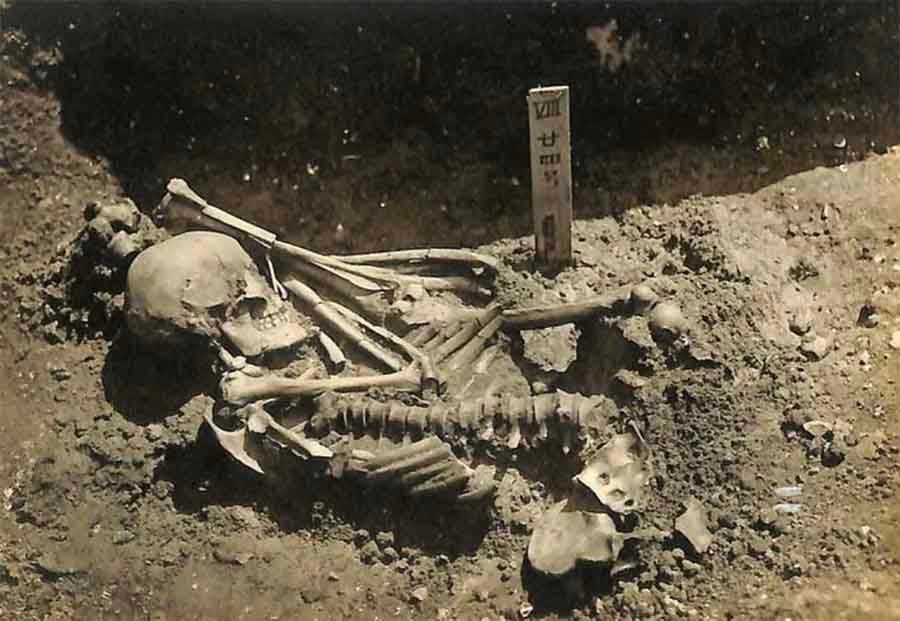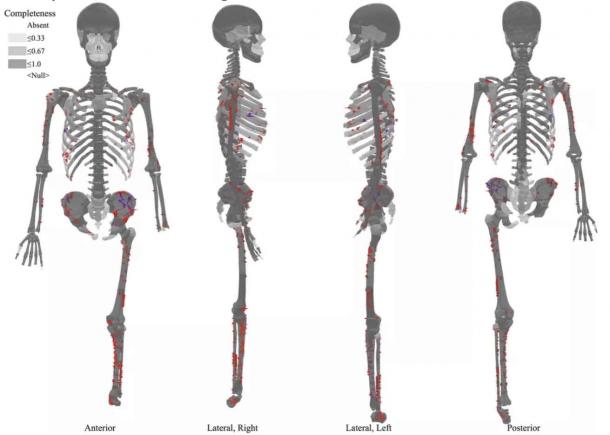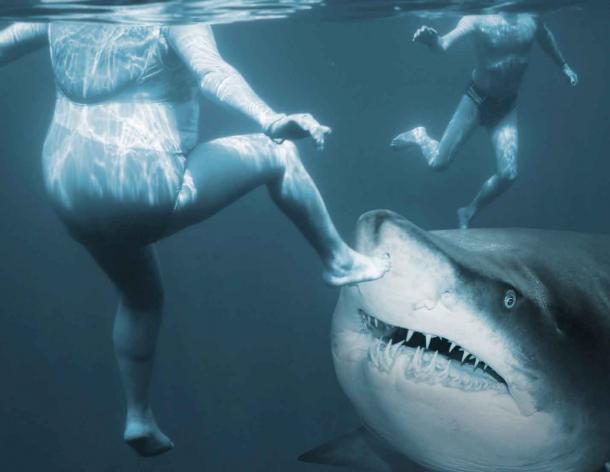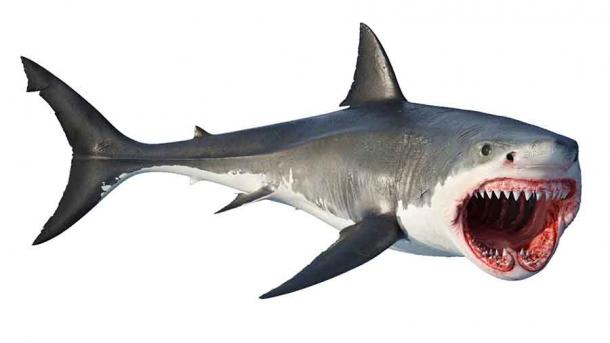A prehistoric Japanese man’s dying moments have been recreated in astonishingly gory detail based on the forensic evidence found on his final remains.

Not only do those details include almost 800 tooth marks on the man’s bones, but he was missing a hand and a leg! This was death by shark attack, and it occurred 500 years before the first documented shark attack in Greece, making it the oldest such occurrence on record.
The man’s broken body was discovered in the early 20th century in a Jōmon-culture shell mound. He is now known as “Tsukumo 24,” after the Tsukumo burial ground where he was unearthed. Archaeologists have worked out that he was buried soon after being mauled by a shark and they’ve reconstructed the blood-thirsty attack in stunning detail.

The distribution of Tsukumo No. 24’s traumatic shark attack injuries. The red features represent wounds from bite marks, the orange represents overlapping striations, and the purple indicates fracture lines. (Journal of Archaeological Science: Reports )
An Ancient Shark Attack That Was Fast and Furious!
A team of Oxford University led researchers have published their Japan shark attack study in the Journal of Archaeological Science: Reports . PhD student J. Alyssa White and professor Rick Schulting first encountered the shark victim while they were investigating violent trauma in the skeletal remains of hunter-gatherers from the shell burial mound in the Tsukumo cemetery site in Okayama, Japan, near Japan’s Seto Inland Sea. They came across the man’s preserved body at Kyoto University, where he had been kept since being excavated in 1920.
The team said the shark most probably took the man’s right leg and left hand in the attack. At least “90 tooth marks reached to the bone” from the almost 800 bite marks identified on the man’s skeletal remains.
Radiocarbon dating determined the shark attacked the 1.5 meter-tall (5-foot-tall) man somewhere between 1370 and 1010 BC, during Japan’s fisher-hunter-gatherer period ( Jōmon era ). This attack predates the 5th-century-BC Greek writings and the oldest illustrations related to shark attacks. So, essentially, Tsukumo 24 is by far the oldest archaeological evidence ever found for a shark attack victim.

This photoshopped photo gives you the feeling of what it might be light to encounter a huge shark just below the ocean surface. ( Kletr / Adobe Stock)
A Baffling Range Of Inordinate Injuries
The researchers found “deep serrated cuts of varying sizes and shapes” covering his bones. Furthermore, they found a hand had been sheared off and a leg was missing, and it wasn’t at first clear to them how, or why, the man had suffered such extreme injuries. According to an article in Science Direct , at first, the researchers said they were “baffled by the man’s inordinate injuries.”
However, by carefully exploring modern forensics data on shark attacks, and with help from George Burgess, director emeritus of the Florida Program for Shark Research , the team re-created the pattern of Tsukumo 24’s injuries by mapping them onto a 3D model of the human skeleton .
The resulting wound location distribution chart suggested “the victim was alive at the time of the attack” and that he may have lost his hand while trying to defend himself. The researchers concluded that while the shark would have damaged numerous blood vessels and organs, “it is likely that at least his larger lower limb arteries would have been severed early in the attack.” This would have resulted in a relatively quick death from hypovolemic shock, which means extremely fast blood loss.

A 3D rendering of a white shark which the shark attack study claims is one of the two most likely species involved in the prehistoric Japanese shark attack. The other possibility was the tiger shark. ( ARTYuSTUDIO / Adobe Stock)
What Lay Beneath?
How on earth did this poor fellow get so close to a killer shark in the first place, and what species was this now famous man-eater?
The sizes and distribution patterns of the tooth marks suggested it was either a tiger shark or white shark that had killed the Japanese man. His body was recovered so quickly from the scene that the researchers speculate he may have been “attacked while fishing with companions.”
He probably lost his hand while punching the shark’s nose as it sheered his leg off, like we see in shark horror films. Study co-author, Mark Hudson, a researcher with the Max Planck Institute in Germany, said it is still uncertain whether Tsukumo 24 was “deliberately targeting sharks or the shark that ended his life was attracted by blood or bait.”
Dr Hudson explains that the discovery not only provides a new perspective on ancient Japan, but it is also “a rare example of archaeologists being able to reconstruct a dramatic episode in the life of a prehistoric community .”
With a certain degree of “sinister,” Dr White wrote in the paper that “we are still vulnerable in the same ways as Tsukumo Individual No. 24 was in the water.”
But White is wrong in this sentiment. “We” certainly are not at risk, because “I” for one never go anywhere near the sea, because of articles like this. So “We” will be fine, and idiots who persistently fish for sharks, notwithstanding the plight of the creature, will continue to not be fine.








